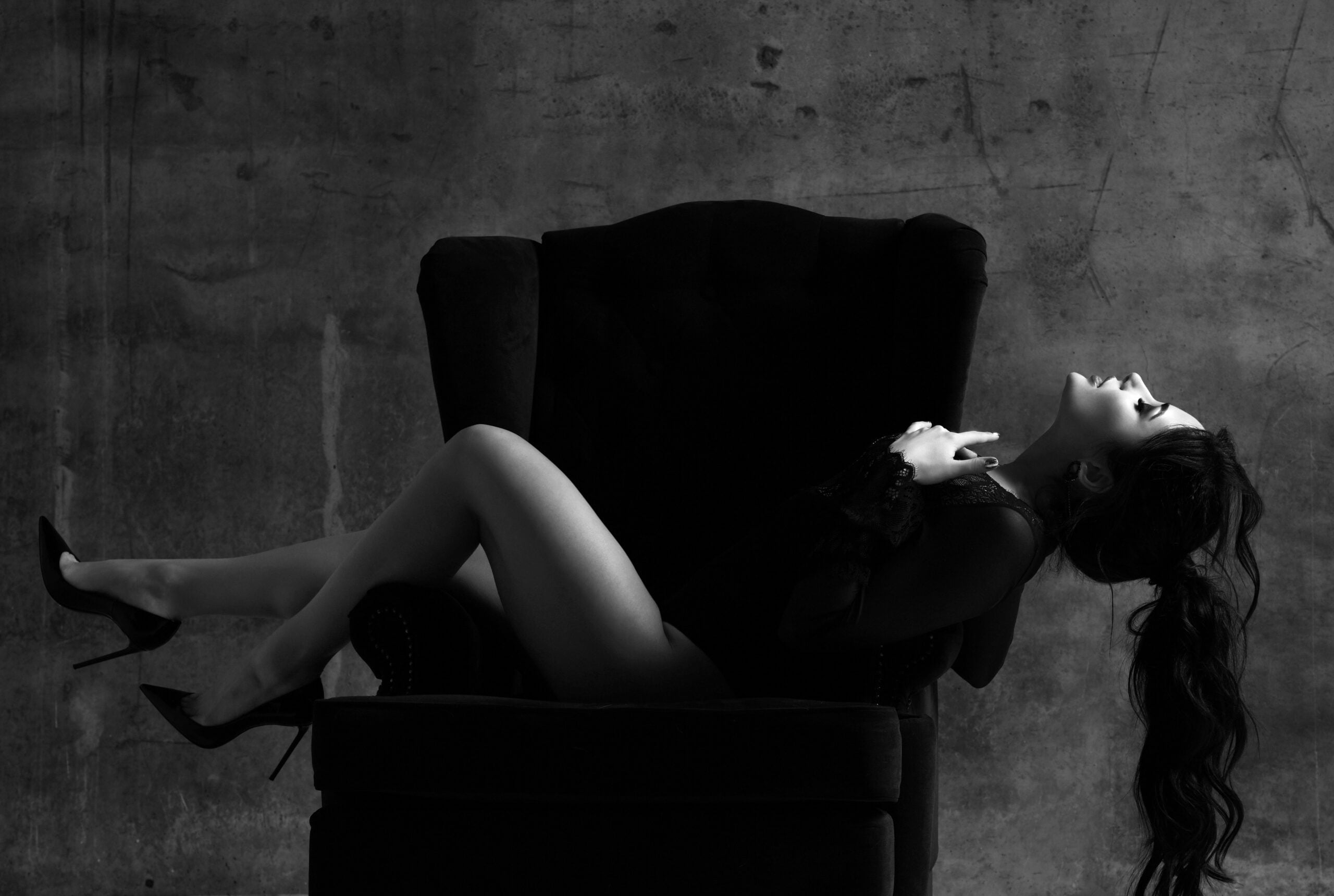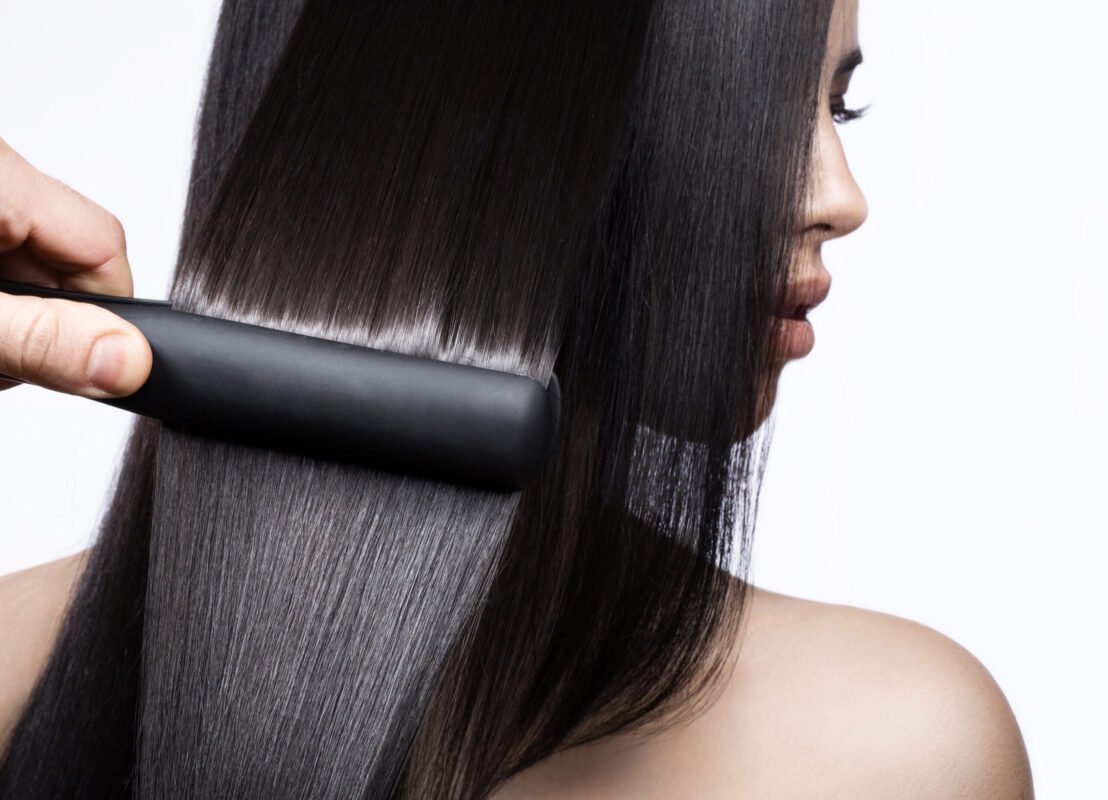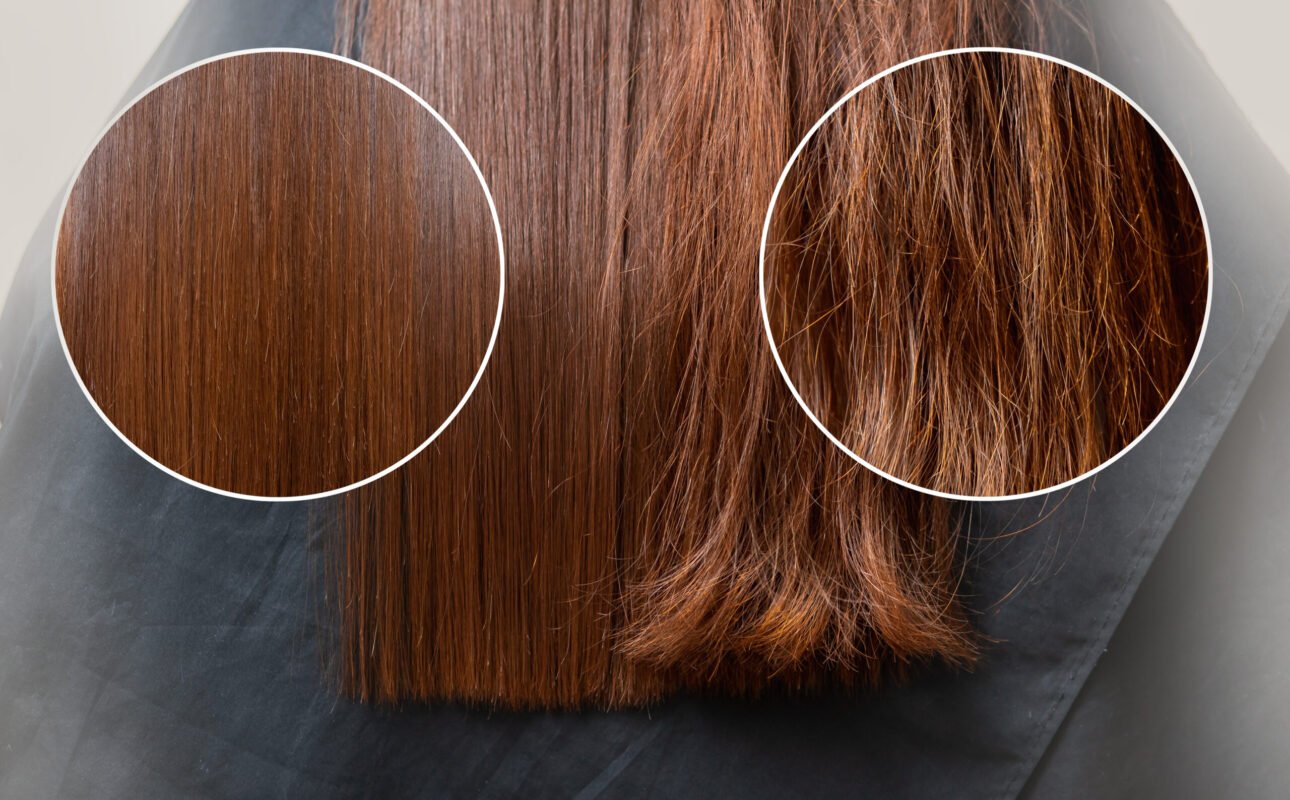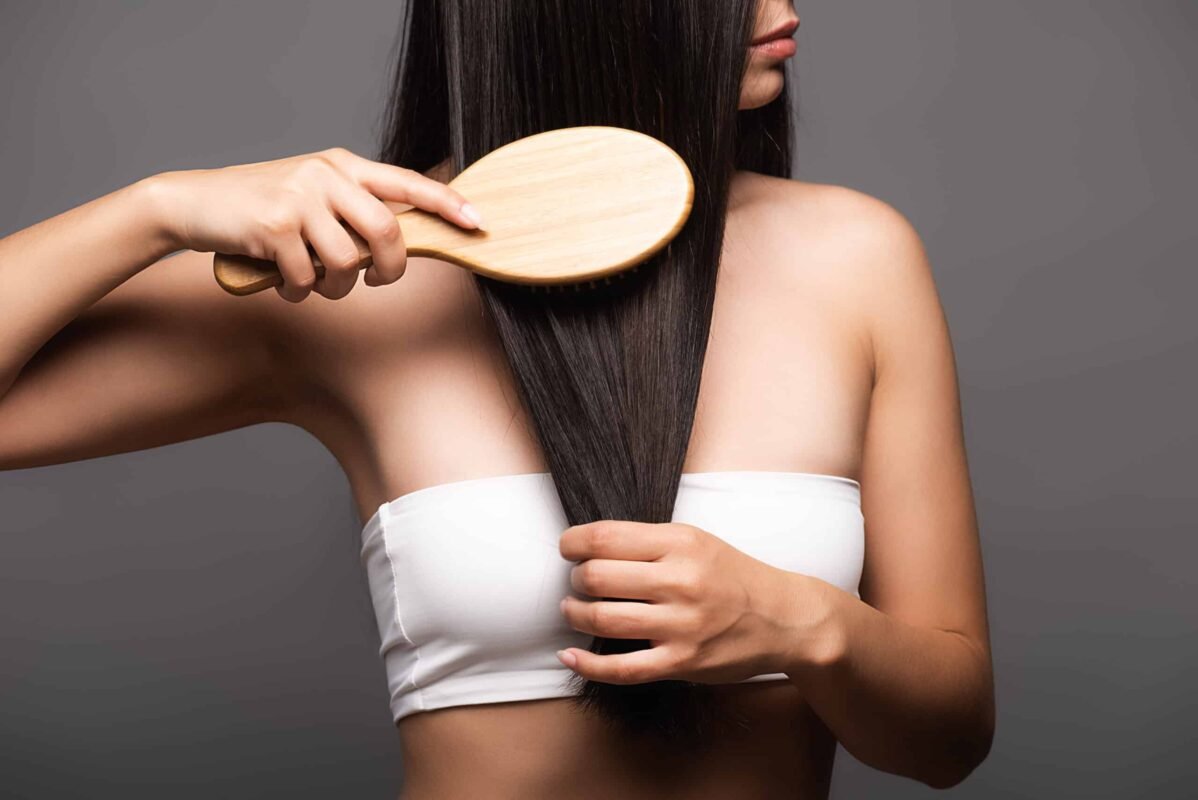5 Signs Your Hair is Ready for a Professional Treatment (And 3 Signs to Wait) 🚨💆♀️

How to know if your hair can handle keratin, nanoplastia, or hair botox treatments
Standing in front of the mirror wondering if it’s time to book that professional hair treatment you’ve been dreaming about? 🤔 Whether you’re considering nanoplastia, hair botox, or keratin treatment, timing is absolutely everything when it comes to achieving gorgeous, long-lasting results.
Get the timing right, and you’ll enjoy months of manageable, beautiful hair. Get it wrong, and your hair (and wallet) won’t thank you. Let’s figure out together whether your hair is ready to transform or needs a little more TLC first! ✨
Why Perfect Timing Matters More Than You Think ⏰
Even the most expensive, high-quality professional treatment won’t deliver amazing results if your hair isn’t ready for it. Think of it like painting over a wall that hasn’t been properly prepped – the results simply won’t last or look as stunning as they should.
When Hair IS Ready for Treatment ✅
- Treatment penetrates evenly and works effectively throughout all hair strands
- Results last the full expected duration (3-6 months depending on treatment type)
- Hair looks healthy, shiny, and natural with improved manageability
- You get maximum value from your professional investment
When Hair ISN’T Ready for Treatment ❌
- Uneven results or patchy processing creates an inconsistent appearance
- Treatment doesn’t last as long as expected, requiring earlier touch-ups
- Hair can become more damaged from processing it wasn’t ready to handle
- You waste money and time on suboptimal results
The good news? By the end of this guide, you’ll know exactly where your hair stands and what steps to take next! 💪
🟢 The Green Light: 5 Signs Your Hair is READY for Professional Treatment
Sign #1: Your Hair Feels Rough and Looks Dull (But Isn’t Breaking) 🌫️
What this looks like:
- Hair feels coarse or rough to the touch despite regular conditioning
- Lacks natural shine, even when freshly washed and clean
- Appears tired, lifeless, or lackluster in photos and mirrors
- Color looks faded, muddy, or lacks vibrancy
- Most importantly: It’s not snapping or breaking during normal brushing
Why this is perfect timing: Rough, raised hair cuticles indicate your hair can benefit tremendously from professional smoothing treatments. This texture allows treatments like hair botox, nanoplastia, and keratin to penetrate effectively and seal those cuticles for maximum smoothness and brilliant shine. This is exactly the hair condition these treatments are designed to transform! 💎
Best treatment options:
- Hair Botox: Ideal for repair, shine restoration, and cuticle smoothing
- Light Nanoplastia: Perfect for smoothing while maintaining hair health
- Keratin Treatment: Excellent if you also want significant straightening power
Sign #2: You’re Spending 30+ Minutes Daily Fighting Frizz and Volume 💨
What this scenario looks like:
- Your morning routine involves multiple styling tools and products
- Humidity makes your hair expand to double or triple its normal size
- You cycle through styling products constantly, searching for the perfect solution
- You actively avoid certain weather conditions because of hair concerns
- You’re constantly touching up and re-styling throughout the day
- Your handbag is full of emergency hair products
Why this signals treatment readiness: If you’re already investing this much daily time and effort into managing your hair, a professional treatment will actually save you significant time and reduce daily stress! Plus, hair that’s naturally frizzy or voluminous (rather than damaged-frizzy) responds beautifully to professional smoothing treatments. 🙌
Best treatment options:
- Nanoplastia: Provides long-term frizz control and volume reduction
- Keratin Treatment: Offers maximum smoothing power for severe frizz
- Hair Botox: Perfect if frizz is primarily caused by dryness and cuticle damage
Sign #3: Your Last Chemical Service Was 6+ Weeks Ago 📅
Chemical services that require waiting periods:
- Hair coloring, highlighting, or any color services
- Previous chemical straightening, relaxing, or perming treatments
- Bleaching, lightening, or any color removal processes
- Any professional salon chemical processing
Why timing is crucial: Your hair needs adequate time to recover, stabilize, and settle after chemical processes. The 6-week milestone is typically when hair cuticles have properly settled and are ready for additional treatment without risk of over-processing or chemical conflicts. ⏱️
Pro tip: If you’ve had highlights or color services, ensure you’re completely happy with your current shade before getting a smoothing treatment, as chemical smoothing can slightly alter color tones and vibrancy! 🎨
Sign #4: Your Hair is Healthy at the Roots but Damaged at the Ends 🌱
What to look for in your hair assessment:
- New growth from your scalp feels soft, healthy, and manageable
- Mid-lengths and ends feel noticeably drier, rougher, or more damaged
- Split ends are present but not excessive or widespread
- Hair tends to break more easily toward the ends rather than throughout
- There’s a clear, visible difference in texture quality from roots to tips
Why this pattern is ideal for treatment: This condition shows your scalp can produce healthy hair, but accumulated damage from heat styling, environmental factors, or previous chemical processes has affected the older hair lengths. Professional treatments work exceptionally well on this hair type because they can smooth and repair the damaged areas while preserving and enhancing the healthy new growth. 🔄
Recommended treatment strategy:
- Start with Hair Botox to repair existing damage and restore health
- Follow with Nanoplastia 6-8 weeks later for comprehensive smoothing
- Schedule regular trims to gradually remove damaged ends
- Maintain with professional aftercare products
Sign #5: You Have Realistic Expectations and Long-Term Commitment 🎯
What realistic expectations look like:
- Understanding that treatments enhance your natural hair rather than completely transforming it
- Genuine commitment to following proper aftercare routines and product recommendations
- Viewing this as a long-term investment in your hair health and manageability
- Having researched the process thoroughly and understanding what to expect
- Seeking improvement and enhanced manageability, not a “quick fix” for severely damaged hair
Why mindset determines success: Professional treatments deliver optimal results when you’re prepared to care for them properly. If you’re ready to invest in quality aftercare products, follow maintenance routines, and work with your stylist for long-term hair health, you’ll achieve amazing, lasting results that exceed your expectations! 💯
🔴 The Red Light: 3 Critical Signs You Should WAIT
Warning Sign #1: Your Hair is Breaking, Snapping, or Shedding Excessively 💔
Concerning symptoms to watch for:
- Hair breaks easily during gentle brushing or combing
- You discover numerous short, broken pieces after styling
- Hair feels mushy, gummy, or overly elastic when wet
- Significant hair loss during washing that exceeds normal shedding
- Ends are severely split, frayed, or completely destroyed
Why you must wait: Severely compromised hair cannot safely handle additional chemical processing, even with the gentlest professional treatments. Adding more chemical stress to already fragile hair could cause catastrophic breakage, further damage, or even hair loss. 🚨
What to do instead:
- Intensive deep conditioning treatments 2-3 times weekly
- Protein treatments if hair feels mushy or overly stretchy
- Regular professional trims every 4-6 weeks to remove damaged ends
- Gentle handling protocols – minimize heat, avoid tight styles, use wide-tooth combs
- Wait 8-12 weeks while focusing exclusively on repair and strengthening
When you’ll be ready: Hair stops breaking during normal handling and feels noticeably stronger and more resilient overall.
Warning Sign #2: Recent Chemical Services (Within 2-4 Weeks) ⚡
Recent services requiring extended waiting periods:
- Hair coloring or bleaching (wait minimum 2+ weeks)
- Chemical relaxers or perms (wait 3+ months)
- Previous keratin or smoothing treatments (wait until completely grown out)
- Highlights, lowlights, or color correction (wait 2+ weeks)
- Any service causing scalp irritation (wait until completely healed)
Why patience is absolutely crucial: Fresh chemical services leave hair cuticles still processing, adjusting, and settling. Adding another chemical treatment too soon creates serious risks including:
- Severe over-processing and irreversible damage
- Uneven, patchy, or unpredictable results
- Unexpected color changes or tone shifts
- Dramatically increased breakage risk
- Compromised treatment longevity
What to do during waiting period:
- Use professional color-safe products to maintain recent color work
- Deep condition weekly to support hair recovery and health
- Monitor hair condition – assess whether it feels soft and healthy or dry and stressed
- Plan optimal treatment timing with your professional stylist 📋
Warning Sign #3: Scalp Irritation, Sensitivity, or Compromised Skin 🚨
Scalp conditions requiring complete healing before treatment:
- Recent sunburn or UV damage on scalp area
- Scratches, cuts, abrasions, or any open wounds
- Active dandruff, dermatitis, or inflammatory scalp conditions
- Sensitivity reactions from recent coloring or chemical services
- Any open sores, lesions, or compromised skin integrity
- Unusual itching, burning, stinging, or pain sensations
Why scalp health must come first: Professional treatments involve chemical formulations that could severely irritate already sensitive or compromised scalp skin. Even the gentlest treatment formulas can cause significant discomfort, complications, or worsening of existing conditions. 🛡️
Essential healing steps:
- Address underlying scalp issues with appropriate treatments or medical care
- Use gentle, soothing shampoos with ingredients like aloe vera or colloidal oatmeal
- Avoid all heat styling until scalp completely heals
- Consult a dermatologist if issues persist or worsen
- Wait for complete scalp health before scheduling any chemical treatments
The Professional Hair Readiness Self-Assessment 📋
Rate your hair honestly and calculate your total score:
Hair Condition Evaluation
How does your hair feel when you run fingers through it?
- Smooth and soft throughout (3 points)
- Slightly rough but not breaking (5 points) ⭐ Treatment ready!
- Very rough and tangles easily (1 point)
- Breaks or snaps during gentle handling (0 points) ❌
How long does your morning styling routine typically take?
- 10 minutes or less with minimal products (1 point)
- 15-30 minutes with moderate styling (3 points)
- 30+ minutes battling frizz and volume (5 points) ⭐ Perfect candidate!
- I avoid styling because hair is too damaged (0 points) ❌
When was your most recent chemical service?
- 6+ weeks ago (5 points) ⭐ Optimal timing!
- 3-6 weeks ago (3 points)
- 1-3 weeks ago (1 point)
- Less than 1 week ago (0 points) ❌
How does your scalp feel right now?
- Completely normal and healthy (5 points) ⭐ Ready to go!
- Slightly dry but not irritated (3 points)
- Somewhat itchy or sensitive (1 point)
- Irritated, burning, or compromised (0 points) ❌
What are your treatment expectations?
- Realistic improvement while maintaining hair health (5 points) ⭐ Perfect mindset!
- Moderate improvement with lifestyle adjustments (3 points)
- Dramatic transformation without much effort (1 point)
- Complete hair personality change (0 points) ❌
Your Hair Treatment Readiness Score
20-25 points: GREEN LIGHT! 🟢 Your hair is absolutely ready for professional treatment! Schedule that consultation and start planning your hair transformation journey.
15-19 points: YELLOW LIGHT 🟡 You’re very close to ready! Address any lower-scoring areas first, then reassess in 2-4 weeks.
10-14 points: PROCEED WITH CAUTION ⚠️ Your hair needs some preparatory work before treatment. Focus on improving the areas identified in your assessment.
Below 10 points: RED LIGHT 🔴 Hold off on professional treatments and prioritize hair health first. Your hair needs dedicated care before it can safely handle chemical processing.
Hair Preparation: The 2-Week Treatment-Ready Plan 📝
If you scored in the yellow or caution zones, here’s your roadmap to treatment readiness:
Week 1: Assessment and Foundation Repair
Monday: Intensive deep conditioning treatment with professional-grade mask Wednesday: Protein treatment if hair feels overly elastic or mushy Friday: Professional trim to remove damaged ends and split ends Daily routine: Gentle handling, minimal heat styling, silk pillowcase for sleep protection
Week 2: Optimization and Final Preparation
Monday: Second intensive deep conditioning treatment Wednesday: Clarifying shampoo treatment to remove product buildup Friday: Final hair assessment – retake the readiness quiz! Daily routine: Continue gentle care protocols and protective styling
Essential Pre-Treatment Products 🛍️
- Professional deep conditioning mask for intensive repair
- Protein treatment for structural strengthening (if needed)
- Clarifying shampoo for thorough cleansing and buildup removal
- Silk or satin pillowcase for friction reduction during sleep
- Wide-tooth comb for gentle detangling
- Quality heat protectant for minimal styling needs
Professional Consultation: Maximizing Your Appointment 👩💼
Even with high readiness scores, professional consultation remains essential! Here’s how to make the most of your appointment:
Essential Questions for Your Stylist 💬
About your specific hair condition:
- “What’s the current condition of my hair, and can it handle treatment?”
- “Which treatment option would work best for my hair type and lifestyle goals?”
- “How should I prepare my hair in the days before treatment?”
- “What realistic results can I expect based on my hair’s current state?”
About the treatment process:
- “How long will the complete treatment process take?”
- “What’s involved in the aftercare routine, and for how long?”
- “When will I see the full results, and how will they develop?”
- “How frequently will I need maintenance appointments or touch-ups?”
About timing and scheduling:
- “Is this the optimal time for treatment, or should I wait longer?”
- “How long should I wait after my recent color service?”
- “When should I schedule my next salon appointment?”
- “Are there seasonal considerations for timing this treatment?”
What Your Professional Stylist Will Evaluate 🔍
- Overall hair health, integrity, and structural condition
- Previous chemical damage patterns and severity
- Natural texture, curl pattern, and hair characteristics
- Current scalp condition and sensitivity levels
- Recent chemical service history and timing
- Your lifestyle, maintenance commitment, and realistic expectations
Treatment-Specific Readiness Guidelines 🎯
Hair Botox Treatment Readiness 💉
Ideal candidates:
- Hair that appears dull and lifeless but isn’t severely damaged
- Recent color or chemical services (after appropriate 2+ week waiting period)
- Fine to medium hair textures seeking repair and shine
- Anyone wanting intensive repair without dramatic texture changes
Should wait if:
- Hair is actively breaking, snapping, or severely compromised
- You’re seeking significant straightening effects (consider nanoplastia instead)
- Recent scalp sensitivity or irritation issues
Nanoplastia Treatment Readiness 🌟
Perfect candidates:
- Thick, naturally frizzy, coarse, or unmanageable hair textures
- Hair that’s structurally sound but challenging to style daily
- 6+ weeks minimum since any chemical services
- Strong commitment to following proper aftercare protocols
Should postpone if:
- Hair is severely over-processed or structurally compromised
- Recent perm or chemical relaxer service (wait 3+ months minimum)
- Pregnancy or breastfeeding (consult healthcare provider)
Keratin Treatment Readiness 💪
Best suited for:
- Very coarse, extremely frizzy, or highly textured hair
- Hair requiring maximum straightening and smoothing power
- Commitment to strict aftercare routine and sulfate-free products
- 6+ weeks minimum since any coloring or chemical services
Should avoid if:
- Fine, fragile, or previously over-processed hair (consider gentler alternatives)
- Recent scalp sensitivity, irritation, or adverse reactions
- Pregnancy, breastfeeding, or planning pregnancy
Seasonal Timing Considerations 🌦️
Optimal Treatment Seasons
Fall (September-November): Prime Time 🍂
- Hair has recovered from summer environmental damage
- Lower humidity levels support better treatment results
- More time spent indoors facilitates easier aftercare routines
Winter (December-February): Excellent Choice ❄️
- Consistently low humidity helps treatments last significantly longer
- Reduced sun, swimming, and environmental exposure
- Perfect season for maintaining and maximizing treatment benefits
Spring (March-May): Fresh Start Season 🌸
- Ideal for beginning the year with a hair transformation
- Moderate weather conditions support optimal healing
- Perfect preparation timing for summer activities and events
Seasons Requiring Extra Consideration
Summer (June-August): Proceed with Caution ☀️
- High humidity can compromise treatment effectiveness and longevity
- Increased sun exposure, swimming, salt water, and chlorine contact
- Vacation schedules might interrupt critical aftercare periods
- Recommendation: Consider waiting until fall unless you’re completely committed to intensive protection protocols
Building Long-Term Hair Health Foundation 💪
Whether you’re ready for treatment now or need additional preparation time, establishing excellent hair health practices benefits everyone:
Daily Hair Health Habits
- Gentle handling techniques during brushing, styling, and washing
- Consistent heat protection when using any styling tools
- Silk or satin pillowcases to minimize friction damage during sleep
- Balanced nutrition with adequate protein, vitamins, and healthy fats
- Proper hydration to support hair growth and health from within
Weekly Maintenance Routines
- Deep conditioning treatments tailored to your hair’s specific needs
- Scalp massage sessions to promote healthy circulation and growth
- Protective styling practices when needed for hair rest
- Regular assessment of hair condition, needs, and goals
Monthly Professional Check-ins
- Trims as needed to maintain healthy ends and prevent damage spread
- Condition reassessment to track progress and adjust care routines
- Seasonal routine adjustments based on weather and lifestyle changes
- Future treatment planning based on hair health improvements
Red Flags During Treatment: When to Speak Up Immediately 🚨
Even when hair seems ready, complications can occasionally arise during treatment. Communicate immediately if you experience:
- Unusual burning or stinging sensations on scalp or skin
- Excessive chemical odors causing nausea, dizziness, or respiratory distress
- Hair feeling like it’s dissolving or becoming gummy during processing
- Severe itching or allergic reaction symptoms anywhere on head or body
- Visible smoke, sizzling, or steam during heat application phases
Remember: Professional stylists want and need your communication about any discomfort or concerns! Your safety and satisfaction are always the top priorities. 🙋♀️
The Bottom Line: Trust the Professional Process 🌟
Professional hair treatments deliver truly transformative results when performed at the optimal time on properly prepared hair. Rushing into treatment before your hair is genuinely ready is like building on an unstable foundation – initial results might look promising, but longevity and hair health will suffer.
If your hair is ready: 🎉
Book that consultation and get genuinely excited about your upcoming transformation! You’re about to embark on a journey to easier, more beautiful, more manageable hair.
If your hair needs more preparation time: 💪
Use this waiting period as an investment in superior results. Deep conditioning treatments, gentle care routines, and patience aren’t just preparation – they’re investments in longer-lasting, more dramatic treatment outcomes.
If you’re uncertain about readiness: 🤔
Schedule a professional consultation anyway! Expert assessment provides personalized guidance, clear timelines, and confidence in your hair care decisions.
Ready to Take Your Next Step? 🚀
Whether you’re booking a treatment or beginning a hair health journey, professional guidance and quality products make all the difference in achieving your hair goals.
For salon professionals: Discover our complete range of professional treatment products designed to deliver exceptional results on properly prepared hair.
For consumers seeking treatment: Look for salons that use premium professional products and prioritize thorough consultations to ensure optimal timing and results.
Related Reading:
- Hair Botox vs. Nanoplastia vs. Keratin: Which Treatment is Right for Your Hair Type?
- Your Go-to Guide for Nanoplastia Aftercare
- The Ultimate Hair Extension Care Guide
Remember: The best professional treatment is always the one that’s perfectly timed for your hair’s unique needs and current condition. Trust the process, prioritize hair health, and your patience will be rewarded with months of gorgeous, manageable results! ✨💎

 Lace Clip-ins
Lace Clip-ins Ponytail
Ponytail
 Shampoo
Shampoo Mask
Mask Leave-in
Leave-in Oil
Oil Treatment
Treatment Styling
Styling
 Nanoplastia
Nanoplastia Keratin
Keratin Hair Botox
Hair Botox Cold Recovery
Cold Recovery
 Hair Treatment Tools
Hair Treatment Tools





















